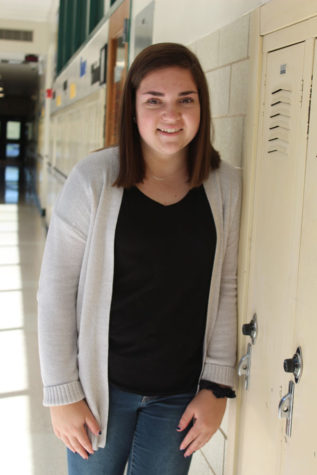Best to be flexible? The pros and cons of FID (Editorial Face-Off)
January 29, 2020
With the possibility of impending weather coming this evening, check out our thoughts on the new Flexible Instruction Days (FID) in this student editorial face-off.
For more general information about Flexible Instruction Days, check out the Carlisle Area School District website.
FID days help students become flexible learners (Editorial)
Say goodbye to snow make-up days and hello to FID days. While in the moment, having to complete work on a snow day may seem annoying, in the overall scheme this will allow students not to have to return for a snow make-up day at a later time.
As part of a pilot program during the 2014-15 school year, CASD utilized a new type of snow day called electronic days, better known as “e-Days.” When school was canceled due to inclement weather, the district was able to have an e-day, where rather than having students come to school for a makeup day, they would complete a school day’s worth of work at home.
Now starting this school year the district is able to utilize a similar type of days called Flexible Instructional Days (FID).
“The Pennsylvania Department of Education (PDE) approved the use of Flexible Instruction Days (FID) as an alternate form of instruction in place of a day otherwise canceled due to inclement weather or building emergency,” according to the CASD website.
CHS has a total of six built-in snow days, already in a school year (this year, Dec. 23, Jan 20, Feb. 17, Mar. 13, Apr. 9, and Apr 13); however, if the winter brings an overwhelming amount of snowfall, we can now limit the possibility of having days added to the end of the school year.
By having FID, these days will help to prevent this from happening.
FID days allow students to get to experience working in a non-traditional workspace, learning to become flexible learners, which may even help in future employment situations.
These days can also help to prepare students for life outside of school, to become adaptable to complete work in a non-traditional workspace, such as your house.
“More and more companies are allowing, and even expecting employees to work from home, adding autonomy to work that any students from traditional background settings still haven’t explored,” explained Andrew Hekkila in an article by eLearning Industry.
A challenge that may arise with FID days is if students are unable to access the internet from their house; however, the school has a solution for this possible problem.
“If it is known that a student doesn’t have access to the internet, the teacher may provide something on hard copy to that student or prepare them to download things to their laptop, “said Stephaine Douglas, Director of digital learning and technology.
Another aspect of FID days is that teachers will be notified by noon the day before a possible FID day, allowing teachers to prepare students on what the assignment will be.
“For many teachers, maybe not all, they will have a chance to talk to students and say, ‘Looks like tomorrow might be a FID day; this is the type of activity I’m going to ask you to do, this is how you are going to access it,’” said Douglas.
While this is not always possible, depending on the time in which the administrations decides the possibility of the district being closed the next day, if this is able to happen it can allow students to be prepared to continue to have school work the following day even in the event of a snow day.
While so far this winter we have not experienced a huge amount of snowfall causing the district to be closed, FID days are ready and available in the case of such an event.
Disclaimer: Articles designated as “Editorial” represent the views and opinions of the author, not the 2019-2020 Periscope staff, CHS/CASD administration, or the CHS student body.

Abigail Lindsay is excited to share the role of editor in chief with Samantha Martin, for her third and final year on the Periscope staff. At CHS, she...
FIDs put too much pressure on parents (Editorial)
In a time where technology makes learning new information and completing schoolwork far easier than ever before, many schools are taking advantage of new programs meant to enhance education and make it more accessible. Often times, those programs are quite effective; however, sometimes they only serve to cause issues for students and families.
The Flexible Instruction Day program, or FID, adopted by the Carlisle Area School District starting this school year, is one of those programs. While convenient in that it keeps the school from cutting into summer break due to snow days, FID causes a lot of conflicts for families across the district, and the program must be reevaluated and revised before being used.
This is not the first time Carlisle has adopted a controversial program to manage school cancellations. In 2014, Carlisle Area School District piloted the eDay program, where, after a day when school was canceled, teachers assigned students online work to complete during a make-up day. This was done in lieu of having an in-school make-up day.
The program, while effective in that it minimized the number of in-house snow make-up days that took place, had some major flaws. Many families felt as if they did not have access to the correct resources, whether they be technology or time, for their students to complete the work.
“Some families tried to work through many online activities with limited number of devices at home for siblings to share,” recalled Stephanie Douglas, the Director of Digital Learning and Technology for the Carlisle Area School District. “Some parents had to take off work with their students when, on a typical make-up day, their students would have been at school. Some families noticed inconsistencies in the amount of work assigned between the different elementary schools.”
Other families struggled with the temporary change in dynamics that the eDays caused: many parents felt that it was not their job to educate their kids, while other parents struggled to get their children to do the work.
“I heard from the parent meeting that they couldn’t get their kids to do the work,” Michelle Disbrow, a senior English teacher at CHS who sat on both the parental and teacher advisory boards for the eDay program, said. “Kids act differently, or can act differently, in school for a teacher versus at home for a parent.”
The new Flexible Instruction Days are extremely similar to the eDays of Carlisle’s past: according to the Carlisle Area School District website, students will still receive assignments from their teachers via the Internet, or through paper copies they can get at school the following day, and still get three days to complete the work.
The only major difference, the website reads, is that the FID days will take place on the actual day school is canceled, rather than the eDays, which happened on the scheduled snow make-up days.
The use of FIDs certainly has benefits. It allows teachers to remain on schedule to finish their curriculum by the set end date for the year, meaning that summer vacations–or even anticipated summer moves–do not experience interference. They also allow parents to be more hands-on regarding their students’ learning in ways they had not been able to before.
“Several parents commented that they enjoyed [the] opportunity to work with their younger children and to see ‘school’ through a new perspective,” said Douglass. “There were students that enjoyed the independent learning experience and many families appreciated having the make-up days, especially those around the spring break, free for travel.”
That being said, there are plenty of issues that will most likely arise due to the FID program that families, and eventually the school district, will have to deal with. Families who struggled during the eDays to get childcare for their children will still struggle using the FID program. Parents who struggled with getting their students to complete eDay work would still have the exact same problems they did before. These issues are ones that the district must address and contemplate how to fix.
Disclaimer: Articles designated as “Editorial” represent the views and opinions of the author, not the 2019-2020 Periscope staff, CHS/CASD administration, or the CHS student body.

Samantha Martin is super excited to share the role of Editor-in-Chief with Abigail Lindsay during her fourth year on staff! She is also a member of several...
